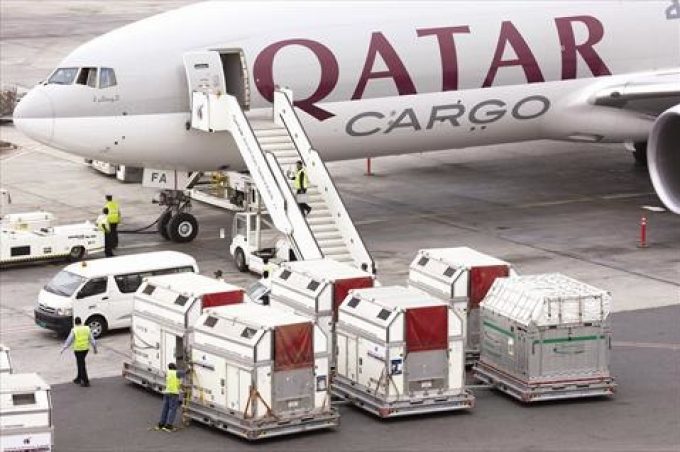Global airfreight volumes blooming as flower shipments take off
Global air cargo tonnages have taken off again after three consecutive weeks of subdued volumes, ...

Qatar Airways Cargo (QR) is betting on live animal transport: it has spent “a lot” on a new live animal transport centre which has increased its handling capabilities by 150,000 animals a year.
The carrier may have a point: the animal transportation market is set to grow at a CAGR of 5.07% from 2023 to 2028. That data includes livestock, which is mostly transported by ship and accounts for just under half the total market. But pets – which tend to fly – make up about one third of the market. This too is seeing strong growth, increasing from a $1.8bn market last year, to CAGR of 9.5% between 2024 and 2032.
And then there are horses, a favourite of Middle Eastern carriers. The global horse racing market is set to almost double in size between 2023 and 2030, to about $794bn, suggesting demand for the high-margin transport business is definitely on the rise.
Those figures explain the size of QR’s new facility — at 5,260 square meters it the world’s largest air cargo animal facility and equates to about half the area of a Manhattan city block. It has the capacity to handle 550,000 live animal shipments a year.
It boasts 140 dog kennels, 40 cat kennels, and 24 stables across four zones. Last year QR transported roughly 10,000 horses around the world.
“As you know, we are the largest carrier of live animals in the world. We have now built the largest facility in the world,” chief cargo officer, Mark Drusch, told guests at the animal centre press conference yesterday.
The Middle East in particular has a focus on horse transport, where margins are good.
Indeed, the facility will not only improve QR’s handling capacity, but it also increases the quality of care that the animals receive during transit, claimed the airline.
And while QR declined to disclose the exact amount spent, Mr Drusch told The Loadstar that the new facility required a hefty investment.
“All I will tell you is we spent a lot,” he said.
He added that the carrier had already seen an uptick of interest from live animal shippers, including for horses and day-old chicks,
“I want them to use us, absolutely, but both for the business reasons and for the animals’ [welfare].”
Mr Drusch’s personal love of animals – he has been a board member for two US zoos – has translated into the small details of QR’s new facility, down to specific music to relax the animals and at least four on-site vets 24/7.
QR is also embracing digitalisation to streamline the transit of live animals. This includes a ‘Kennel Calculator Tool’, which determines the ideal kennel size for a pet and ensures compliance with IATA’S live animal regulation (LAR) standards.
According to QR, offering digitalised LAR training will also ensure rapid staff compliance and proficiency in animal handling.
IATA member airlines must comply with the LAR standards for the acceptance and carriage of live animals in full aircraft loads. QR was the first airline to receive the Centre of Excellence for Independent Validators (CEIV) live animals certification.
The Middle Eastern carrier underwent its last CEIV LAR compliance check in 2022 and is due for a review this year.
QR opened its previous live animal handling facility in 2014, but built the new facility from scratch less than 10 years later.
Mr Drusch said: “We learnt a lot. When I first joined cargo three months ago, I was taken through this and told ‘here’s what we learnt, and that’s what we’re building at the new facility. So, the good news is, we’re always improving.”
He pointed to the padded floor on the horse stables, an upgrade from the hard floors in its old centre. This reduces noise and therefore stress to the animal.
The facility started its official live animal handling operations on 12 March.
Comment on this article